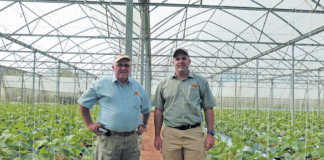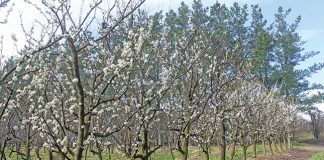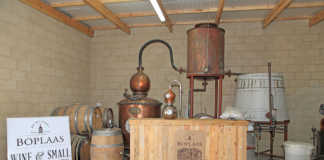
Photo: Bill Kerr
The popularity of broccoli is still growing and will continue to do so across the globe. Much of this is due to the discovery of health-promoting qualities that are touted in many magazine articles.
Broccoli is considered excellent for preventing cancer. All cruciferous crops contribute to general health, but it is considered that the healthiest of all of them is kale.
Unfortunately, this crop is not all that tasty. Broccoli is generally rated very high in the health department and is also good tasting.
When I joined a seed company, it was well known that we could not produce broccoli successfully in summer due to dismal performance in the heat. On top of this, most varieties would bolt when going into spring, causing broccoli to be considered an autumn and winter crop.
An American company bred a variety that managed to be reasonably productive in summer, but yields and quality were far worse than those of winter varieties. Things have changed radically since then, enabling us to be in production throughout the year.
Plant breeding has progressed to the point where some varieties will now only perform well in summer. Producers can now confidently be in production for 12 months of the year.
Different varieties
Some varieties will only perform well for a couple of months, while others will be able to produce good yields of quality over many months. One can now go with two or three varieties over the year.
Even though a variety may be productive over an extended period, one could still replace it with a higher-yielding variety towards the end of its productive life.
When starting off with this crop, it is worthwhile planting a few varieties at a time over a couple of years so as to get the perfect fit for your conditions.
It is important to record planting and harvesting dates for each variety so as to plant accordingly in the future for constant production, without overlapping and also having gaps in production. Bear in mind that days to maturity will vary according to temperatures.
Compared with cauliflower and cabbage, broccoli requires less nitrogen in order to perform well. The yield will be greatly influenced by the size of the plant frame in the early stages.
One should wait for the transplants to be settled in, and when one gets into the regular irrigation cycle, apply a light side dressing of LAN near the plants in order to stimulate them to make larger frame leaves and ultimately, larger heads.
The following application can be broadcast two to three weeks later and usually this will be sufficient until harvest.
However, if there is leaching due to rain, an additional application may be necessary. When unsure, do frequent inspections to check for patches that may be starting to develop a lighter colour.
If one plants a variety out of its season of comfort, there will be signs that develop on the broccoli head. These signs can take many forms, including small bract leaves protruding from between the florets.
Uneven bead sizes on the head, discoloured beads and uneven floret development are all signs of stress that can render the heads unmarketable. If any of these symptoms start to develop, avoid that variety for that season.
Bill Kerr is a vegetable specialist and breeder.










